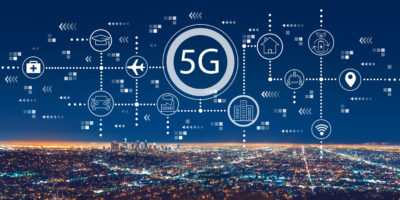The hype about 5G is usually aimed at consumers whose fast and fancy smartphones are expected to blossom with 5th generation possibilities. While 5G is on a rapid roll-out, the promise of fabulous universal connectivity is an incomplete and ongoing process. Tapping into 5G’s backhaul potential could bring immediate benefits to areas where it is now available, says NetworkWorld.com.
Farpoint Group principal Craig Mathias explains that an arrangement that allows both infrastructure and end users to connect through the same 5G access points could benefit from a 5G backhaul set-up. He says that looking at 5G as its own entity rather than as a wireless component will open up different avenues for its use. “5G is not about augmenting wire,” he said. “It’s about replacing it.”
Paul Challoner, Ericsson VP of Network Products Solutions for North America, agrees that backhaul presents an opportunity. “In the enterprise WAN market, there’s fiber, there’s DSL, Ethernet. Where they’re not cost-effective or easy to implement, we see using 5G as a WAN connection to the enterprise,” he said. Challoner also discussed a real life situation saying, “In parking lots, or thinking about big box retail stores, in-store pickup – employees with hand-held devices to scan boxes and so forth, IP cameras – you might not have an LTE chipset in an IP camera. So you’d connect them back to a gateway that does have one.” The backhaul connection would eliminate the need for the chipset.
Houston is a city where 5G has made inroads, and Jack Hanagriff, a technology coordinator for the city, has been looking at ways to maximize capabilities there. “Houston has very little public fiber,” he said. “There’s fiber all over the place but we don’t own it. Prior to the Super Bowl, we had the Final Four, and that’s when we discovered that our wireless infrastructure, because of drastic environmental change, all the new people and so on, significantly disrupted the cameras. We had to put in technology that didn’t have infrastructure,” he said.
Using an innovative approach to acessing the resources at their disposal, Hanagriff and Houston contracted with Siklu, a company familiar with easy to deploy backhaul technology. Houston was looking for a way to channel electronic systems in a way that would allow a large city event to operate in tandem with existing cameras and other equipment. The key was making use of the city’s nearby servers and network hardware.
“I piped it into a vent shaft,” Hanagriff said, allowing the parking garage technical facilities to provide coverage throughout Discovery Park. He explained that they were able to position an antenna at both ends of the airflow ventilation system in the garage, and direct the signal from the park above to the command center underground.





Reader Interactions